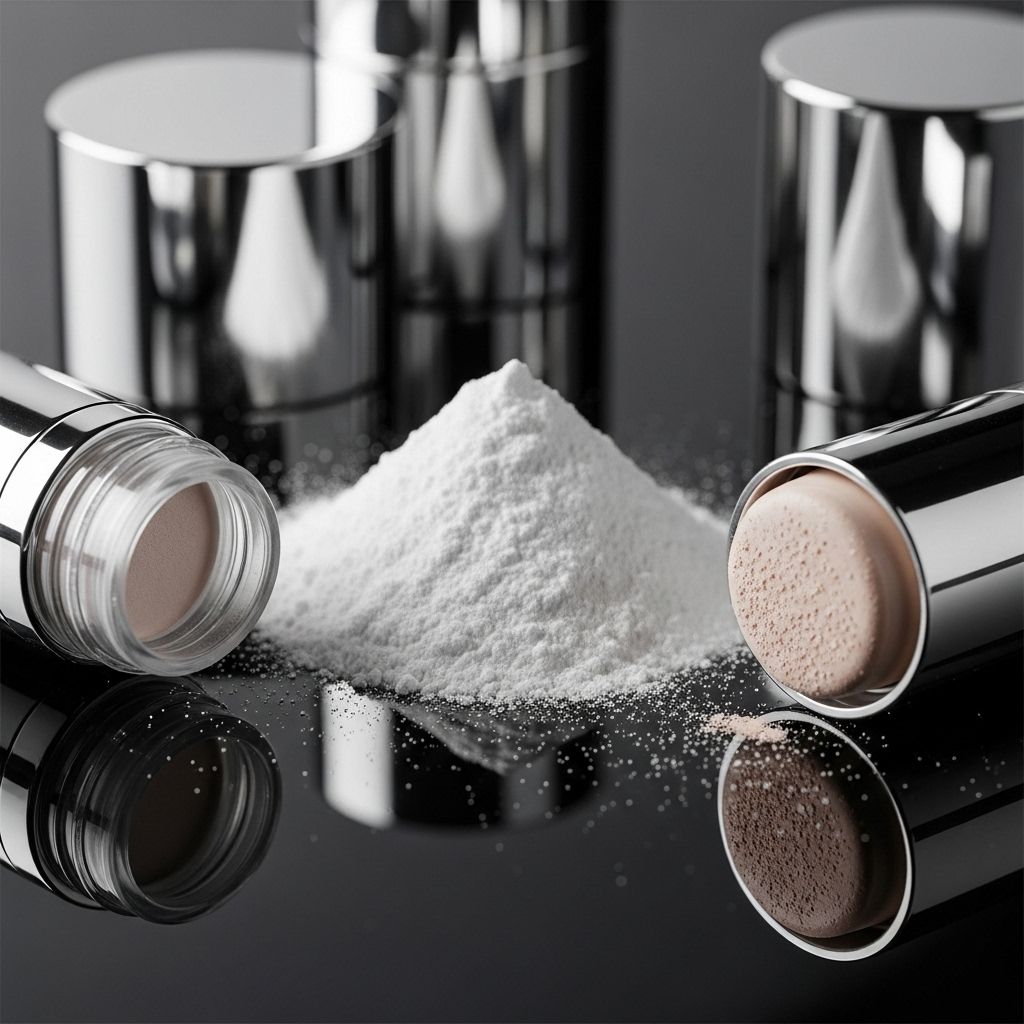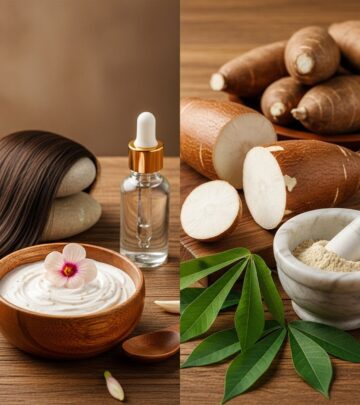Aluminum Tristearate in Cosmetics: Functions, Safety, and Applications
Exploring the role, benefits, and safety of aluminum tristearate as a versatile ingredient in cosmetic formulations.

What Is Aluminum Tristearate?
Aluminum tristearate is a metallic soap, specifically an aluminum salt of stearic acid (octadecanoic acid). It belongs to a broader group of stearate salts that includes lithium stearate, calcium stearate, magnesium stearate, and others. These compounds are typically fine, white powders with a slight fatty odor, widely utilized across multiple industries, including cosmetics and personal care products.
In the context of cosmetics, aluminum tristearate is primarily found in products such as eyeliner, eyeshadow, mascara, lipsticks, blushers, face powders, and foundations. It is also present in fragrances, deodorants, and various skin and hair care formulations.
Functions of Aluminum Tristearate in Cosmetics
- Lubrication: Stearate salts, including aluminum tristearate, are valued for their lubricating properties, which help products glide smoothly onto the skin, enhancing application and user experience.
- Emulsion Stabilization: One of the primary roles of aluminum tristearate is to stabilize emulsions, preventing the separation of oil and water components in cosmetic formulations. This ensures product consistency and longevity on the shelf.
- Viscosity Control: The ingredient is used to thicken the oil (lipid) portion of cosmetics, transforming watery creams into richer, more luxurious textures without interfering with active ingredients. This thickening property is crucial for achieving the desired product feel and performance.
- Opacifying Agent: Aluminum tristearate reduces the transparency or translucency of finished products, giving them a more opaque appearance, which is often desirable in foundations, powders, and other makeup items.
- Anticaking: In powdered products, it prevents caking or clumping, ensuring a smooth, even application and maintaining product integrity over time.
- Skin Conditioning – Emollient: It can act as an emollient, helping to soften and smooth the skin, contributing to the sensory attributes of the product.
Applications in Personal Care Products
Aluminum tristearate’s versatility makes it a common additive in a broad spectrum of cosmetics and personal care items:
| Product Category | Role of Aluminum Tristearate |
|---|---|
| Makeup (eyeliner, eyeshadow, mascara, lipstick, blusher, foundation) | Lubrication, stabilization, thickening, opacifying |
| Powders (face powder, blush) | Anticaking, smooth texture |
| Deodorants, Antiperspirants | Emulsion stabilization, skin conditioning |
| Fragrances | Stabilization, viscosity control |
| Skin and Hair Care Products | Emulsifying, thickening, conditioning |
Mechanism of Action
Aluminum tristearate functions as a bridge between oil and water phases in cosmetic formulations, a characteristic typical of metallic soaps. Its molecular structure allows it to interact with both hydrophobic (oil-based) and hydrophilic (water-based) components, which is essential for stabilizing emulsions and achieving uniform dispersion of ingredients.
The thickening effect is achieved by forming a gel network within the oil phase, which increases viscosity and provides structure to the product. This not only enhances the sensory profile but also contributes to the physical stability of the formulation, reducing the likelihood of phase separation and maintaining consistency under varying storage conditions.
Origin and Chemistry
Aluminum tristearate is a synthetic compound, though stearic acid can be derived from both animal and vegetable sources. The chemical formula is C54H105AlO6, and it is characterized as a white, waxy solid at room temperature, insoluble in water but soluble in organic solvents such as alcohol and ether.
Chemically, it is classified as an aluminum salt of stearic acid, a long-chain fatty acid. The “tri” in tristearate indicates that three molecules of stearic acid are bound to a single aluminum ion, distinguishing it from other aluminum stearates that may have varying degrees of substitution.
Safety and Regulatory Information
Aluminum tristearate is subject to regulatory scrutiny as part of the broader category of aluminum compounds in cosmetics. In the European Union, cosmetic ingredients are regulated under the Cosmetics Regulation (EC) No 1223/2009, which requires safety assessments for all ingredients used in cosmetic products.
- Safety Assessments: The safety of aluminum in cosmetics has been evaluated by the European Scientific Committee on Consumer Safety (SCCS), most recently in 2019 and 2021 for specific applications such as antiperspirants and lipsticks. While aluminum exposure from cosmetic use is generally considered low, ongoing research evaluates cumulative exposure from multiple sources.
- Regulatory Status: Aluminum tristearate is permitted for use in cosmetics within specified concentrations, depending on the product type and intended use. Manufacturers must comply with regional regulations, which may differ between the EU, US, and other markets.
- Consumer Guidance: For individuals with specific concerns about aluminum exposure (e.g., those with kidney impairment or seeking to minimize aluminum intake), consulting product labels and healthcare providers is advisable. However, for the general population, current evidence does not suggest significant risk from cosmetic use of aluminum tristearate when products are used as intended.
Industrial and Pharmaceutical Uses
Beyond cosmetics, aluminum tristearate finds extensive use in industrial applications:
- Lubricating Greases: It enhances consistency and performance, particularly in high-temperature greases where thermal stability is required.
- Paints and Coatings: Acts as a dryer, thickener, and waterproofing agent, helping to ensure even pigment distribution and durability.
- Plastics and Rubber: Used as a lubricant and processing aid to improve flow properties and reduce friction during manufacturing.
- Pharmaceuticals: Serves as an emulsifying agent in tablets and capsules, providing smooth coatings and uniformity to ease swallowing and enhance drug stability.
Aluminum Tristearate and the Environment
As with many synthetic compounds, the environmental impact of aluminum tristearate depends on its concentration, use patterns, and disposal practices. While not classified as highly hazardous, responsible manufacturing and disposal are encouraged to minimize environmental accumulation. The cosmetic industry is increasingly emphasizing biodegradable and environmentally friendly alternatives for some traditional ingredients, though aluminum derivatives remain widely used due to their performance and safety profiles.
Frequently Asked Questions (FAQs)
Q: Is aluminum tristearate safe for use in cosmetics?
A: Current regulatory assessments in the EU and US indicate that aluminum tristearate is safe for use in cosmetics within established limits. Ongoing reviews ensure that safety remains up to date with the latest scientific evidence.
Q: What products commonly contain aluminum tristearate?
A: It is found in makeup (eyeliner, eyeshadow, mascara, lipstick, foundation), powders, deodorants, fragrances, and some skin and hair care products.
Q: What are the main functions of aluminum tristearate in cosmetics?
A: Its primary functions include lubrication, emulsion stabilization, viscosity control, opacifying, anticaking, and skin conditioning.
Q: Can people with sensitive skin use products containing aluminum tristearate?
A: While generally well-tolerated, individuals with very sensitive skin or allergies to aluminum compounds should consult product labels and consider patch testing or consulting a dermatologist.
Q: Is aluminum tristearate natural or synthetic?
A: It is a synthetic compound, though the stearic acid component can be derived from natural sources (animals or plants).
Conclusion
Aluminum tristearate is a versatile and widely used ingredient in the cosmetics and personal care industry, valued for its multifunctional properties that enhance product performance, stability, and sensory attributes. Its roles as an emulsion stabilizer, thickener, lubricant, and opacifying agent make it indispensable in formulations ranging from makeup to deodorants. While its safety is supported by current regulatory assessments, ongoing research ensures that guidelines remain relevant for consumer protection. As consumer awareness and regulatory standards evolve, the use of aluminum tristearate will continue to be guided by the principles of safety, efficacy, and sustainability.
Read full bio of medha deb











